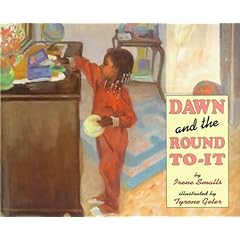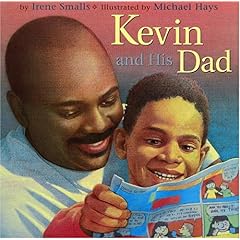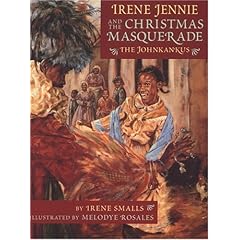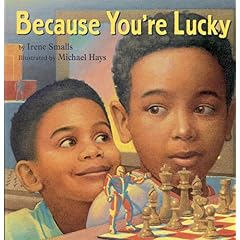 On her website, Irene Smalls writes that she grew up in a home without books. There were no bedtime tales or cozy reading nooks. Instead, she discovered the magic of storytelling in school. Her teacher used songs, games and dance to bring stories to life. That awakened a joy inside her that lasted into adulthood.
On her website, Irene Smalls writes that she grew up in a home without books. There were no bedtime tales or cozy reading nooks. Instead, she discovered the magic of storytelling in school. Her teacher used songs, games and dance to bring stories to life. That awakened a joy inside her that lasted into adulthood.
Smalls has been Miss Black New York State, a radio reporter, actress, but a passion is writing for children. Her early classroom experience with reading led to her becoming an award-winning author of more than a dozen children’s books. Smalls first book, Irene and the Big Fine Nickel, was inspired by growing up in 1950s Harlem. Her books explore the joy of family life and black history. Her goal is to: “write classic books that will last for a lifetime.”
Please join us in celebrating Irene Smalls on the 23rd day of our campaign:
Please tell us about how your experience in kindergarten put you on the path to publication?
 In kindergarten my teacher made reading loud, busy and fun. And at five years old I loved all three of those things so I learned to love reading. It wasn’t until I left her classroom that I found that people sat still to read. In kindergarten we were dancing, laughing and playing games throughout the literacy experience.
In kindergarten my teacher made reading loud, busy and fun. And at five years old I loved all three of those things so I learned to love reading. It wasn’t until I left her classroom that I found that people sat still to read. In kindergarten we were dancing, laughing and playing games throughout the literacy experience.
I read that you were told you weren’t a good writer in grade school and college. What kept you believing in your dream?
I actually never dreamed of being a writer or wanted to be a writer. I just sort of fell into it. But, I found that writing fits my values, my spirit, and my talents of creativity and sensitivity.
What inspired you to write for children?
 It was kindergarten again. Our reading text was Fun with Dick and Jane. There were no black children in the book at all but my kindergarten teacher read to my all Black class, Paul Lawrence Dunbar’s “Little Brown Baby”. At five I was called the little brown baby girl. I felt so special and important. I had only been in kindergarten one day and they had already written a book about me.
It was kindergarten again. Our reading text was Fun with Dick and Jane. There were no black children in the book at all but my kindergarten teacher read to my all Black class, Paul Lawrence Dunbar’s “Little Brown Baby”. At five I was called the little brown baby girl. I felt so special and important. I had only been in kindergarten one day and they had already written a book about me.
How did you land your first deal?
The first book deal was the easiest. I just called up a publisher and told him he needed to publish my book and he said, “OK”.
Your books: Irene and the Big Fine Nickel, Kevin and His Dad and Jonathan and His Mommy express the beauty of family and community. Where do your ideas spring from?
 The metaphor I tell students is I write stories from the tip of my nose. A writer writes best about what they know. I write about growing in Harlem, New York and about my children as they grew up.
The metaphor I tell students is I write stories from the tip of my nose. A writer writes best about what they know. I write about growing in Harlem, New York and about my children as they grew up.
How does your educational background in Black studies inform your work?
Being a child of the sixties I acutely felt the void of the 50’s when blackness was a thing to be a ashamed of and hopefully forgotten. Growing up in a poor, working class neighborhood I wanted to honor the great people I knew who may not have been well educated or wealthy but were nurturing, brilliant human beings.
Please tell us about your 12-month Black History Month series.
 Because Black History is relegated to one month of the year as a sort of historical segregation it is my concept to place Black History where in belongs as part of American History. There was and is no separate African-American History. By using an existing framework of the holidays it is my hope to make Black History part of each and every month. Schools always have a holiday celebration as part of the normal activities.
Because Black History is relegated to one month of the year as a sort of historical segregation it is my concept to place Black History where in belongs as part of American History. There was and is no separate African-American History. By using an existing framework of the holidays it is my hope to make Black History part of each and every month. Schools always have a holiday celebration as part of the normal activities.
How has the landscape changed for African-American children’s book authors over the years? What gains have made you proud? What do you hope the future brings?
 These are frightening times now for Black children’s books. I heard that 2% of the children’s books published last year were Black Children’s books, that is going backward. It is like it’s the 1950’s again. Of course, we do have a lot of negative imagery in the gangstas and their girlfriends books that seem to be doing OK. The Black Bookstores that would naturally support our books are disppearing at an alarming rate. I must commend The Brown Bookshelf for recognizing the void and providing a platform for African-American children’s authors. I hope in the future that Black parents recognize the value of African-American books for our children and demand that schools include the books in large numbers in all aspects of the curriculum.
These are frightening times now for Black children’s books. I heard that 2% of the children’s books published last year were Black Children’s books, that is going backward. It is like it’s the 1950’s again. Of course, we do have a lot of negative imagery in the gangstas and their girlfriends books that seem to be doing OK. The Black Bookstores that would naturally support our books are disppearing at an alarming rate. I must commend The Brown Bookshelf for recognizing the void and providing a platform for African-American children’s authors. I hope in the future that Black parents recognize the value of African-American books for our children and demand that schools include the books in large numbers in all aspects of the curriculum.
What were some of the toughest obstacles you encountered when you began your children’s writing career?
The toughest obstacles are still there, the overall perception in the marketplace that Black Children’s books generally don’t sell well.
Please share some of the proudest moments.
 Some of my proudest moments were performing at the White House twice, and writing books about the people I love.
Some of my proudest moments were performing at the White House twice, and writing books about the people I love.
If you could go back and whisper in your ear when you were just starting out, what advice would you give yourself about the children’s book industry?
Keep all your rights, be totally open, flexible, recognize books are a commodity, but still recognize the importance and value of writing books for African-American children.
What do you hope children take away from your stories?
That they are loved. That they matter. That all things are possible, really, if they believe.
You’ve won many honors for your work. How do you measure your success? How important are awards and recognition to you?
 Honors are nice but cash spends better. Seriously, I love what I do. I am making the world a better place.
Honors are nice but cash spends better. Seriously, I love what I do. I am making the world a better place.
Along with your lovely stories, you’re known for your captivating presentations that incorporate music, costumes, games, chants and storytelling. How does that add to the reading experience? How does it help you connect with young people?
The presentations started because no one wanted to hear another author sit in a chair and read a story. When I said I was a storyteller, people were interested. In terms of connecting with children research shows that the most learning occurs when children are engaged physically, emotionally, visually and orally with the material.
What inspires your work?
Kindergarten and My Nana.
How do you balance the creative side of writing with the business side?
The two sides are separate but more and more the business side is taking predominance. You can write the most beautiful things in the world but if there is no market the dust bunnies get it for free. We are business people, creative people but business people too. We have to keep the business side uppermost in our minds because that is how the world works.
Your books, My Nana and Me (Little, Brown, 2005) and My Pop Pop and Me (Little Brown, 2006), were such delightful stories. What can we look forward to next?
 Since the African-American children’s market has shriveled up. I am writing creative non-fiction that celebrates all our children.
Since the African-American children’s market has shriveled up. I am writing creative non-fiction that celebrates all our children.
What’s your greatest joy?
The greatest joy is feeling my self grow. Writing is an art-form as well as a craft. I am still working on developing my craft.
The Buzz on My Pop Pop and Me:
“An African American grandfather, Pop Pop, and his grandson transform baking a lemon cake into a magical mystery tour of sound and rhythm: “Sniff sniff the lemon whiff / Peel peel I love the lemon feel.” Warm, soft, stylized watercolors add a surreal element to the lively story, especially as fish-eye perspectives sweep the pages and boy and grandfather sometimes shrink down to measuring-cup size. The inevitable messes and cleanup of any kitchen project are faithfully recorded: “Blat blat goes the batter I splat / Swipe swipe the counter I wipe.” The inventive wordplay is quirky (“sizzle sizzle the butter frizzles”), but it somehow makes sense that sprinkled salt would twinkle or that whisks would twisk . . . this is an affectionate, energetic paean to a cross-generational dynamic duo.”
— Booklist
The Buzz on My Nana and Me:
“As she did in Jonathan and His Mommy (1992) and Kevin and His Dad (1999, both Little, Brown), Smalls once again focuses on family relationships. In this charming picture book, an African-American girl tells readers about a special day that she shares with her grandmother. From a tea party and pat-a-cake to bath and bedtime, the routine activities will be widely recognized and celebrated for their simple pleasures. The child’s voice allows the story to take on the rhythm of poetry. Several lines in particular recall many grandchild/grandparent relationships: I am the smartest girl in the world/I know because my Nana told me so, and Nana calls me her baby girl, but I’m/not a baby, I’m big. The affection between the two is reinforced by the golden-hued background and the watercolor illustrations of the smiling pair as they spend time together. The text adds to the playful spirit of the story by dancing across the pages and changing font style to emphasize certain words. A sweetening title that should win lots of smiles.”
— School Library Journal
“Lucky is a child with a loving grandmother, as this picture-book valentine demonstrates. A young African American girl describes a special day with Nana. They have a tea party, play hide-and-seek and dress-up, comb and plait Nana’s hair, play pat-a-cake, and, after a bath, read stories before bedtime. Johnson’s softly colored, warmhearted illustrations bring out the feelings of the loving relationship, which Smalls describes in her spare, rhythmic text. Sunny yellow hues backlight the child and her grandmother, reflecting their pleasure in doing simple things together. Asides printed in curly and wavy script express the girl’s thoughts as Nana calls her “her sweetening girl.” Endpapers provide space “to place a photo of you and your Nana here” indicating a push toward the gift market, but this is a gentle, tender selection that is suitable for libraries, too.”
— Booklist
For more on Irene Smalls, please visit her website: www.irenesmalls.com
You can also check out the following sites:
